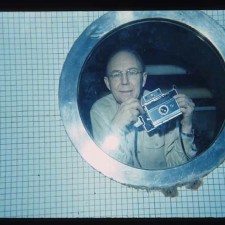Featured Stories, MIT | January 4, 2013
Remembering “Papa Flash!” the MIT Professor who Brought Vision Underwater
by Genevieve Wanucha
The late “Doc” Harold Edgerton, MIT inventor, enchanted the world with his high-speed flash photography, which could “freeze time” down to the millionth of a second–as a bullet tore through a banana or a droplet landed in a pool of milk. His devices gave physicists new powers to analyze the dynamics of fluids, air, and engines and aided in WWII aerial reconnaissance. He also took the cameras underwater. This week, Oceans at MIT remembers his major contributions to ocean exploration and marine biology on this 23rd anniversary of his passing. Luckily, MIT’s extensive Edgerton Digital Collections Project allowed us to pour through the late professor’s personal documents and photos to unearth the passion that brought vision under the sea.
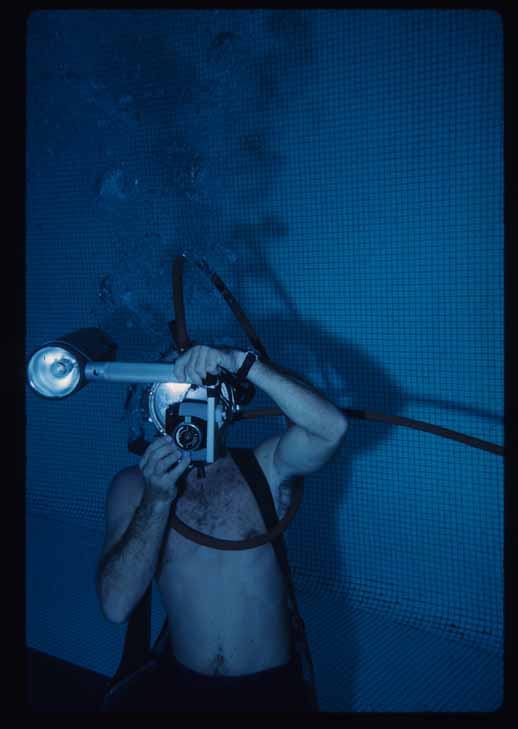
Edgerton was first drawn to underwater photography because of a leaky box. It all started in the mid-1930s when E. Newton Harvey, a bioluminescence expert, approached him for advice on photographing phosphorescent deep-sea fishes for an upcoming book. Never one to refuse helping anyone, Edgerton assembled the camera and instructed Newton to encase it in a watertight box to lower into the depths. But soon, upon bumping into the author in Harvard Square, Edgerton learned that the box had distorted, cracked, and allowed seawater in to ruin Newton’s project. From then on, Edgerton was determined to “see through” seawater. “Why not a spherical design or even a cylindrical one?” Edgerton wrote. “Soon I was sketching all sorts of designs.”
Water scatters light, creating “fog” within short distances, which makes taking anything but close up photos underwater really difficult. Edgerton knew this, and got right to work in his MIT lab devising lamps that could handle all ocean challenges: they produced high-intensity light, possessed mechanical strength to withstand great pressures, and required high efficiency batteries for hours-long missions. By 1937, Edgerton had designed his first successful underwater camera for oceanographic research in collaboration with WHOI researchers.
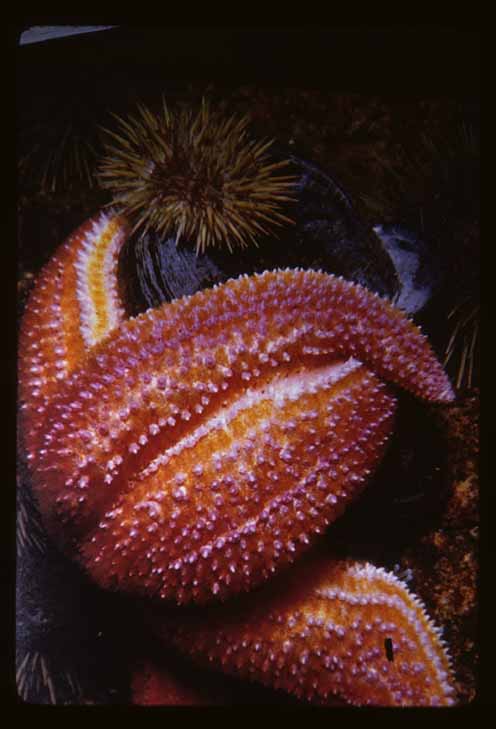
Soon came a series of almost magical tools for marine biologists frustrated that camera lights scared animals away. For example, “Doc” rigged the ‘interruption camera,’ which functioned when a passing sea creature interrupted a light beam, triggering the camera shutter and its rapid flash. In the early 1940s, he applied high-speed motion cameras to the tricky problem of tracking rapidly moving marine animals, such as seahorses. Seemingly motionless organisms were revealed as quite busy life forms in Edgerton’s underwater time-lapse photography, a tool not just for spying on sea urchins, sand dollars and starfish but also for studying erosion patterns. Not until the late 1950s did Edgerton invent a camera that could capture animal bioluminescence at depths of 6,000 meters—the problem that had started it all.
Edgerton marveled that these images revealed “a host of items unsuspected and illuminate a variety of others which for long have resided in the limbo of half-knowledge.”
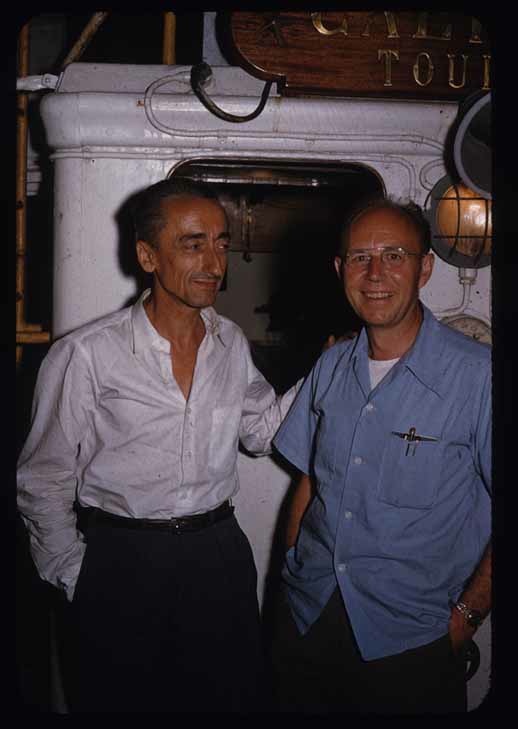
1952 was a game-changing year for Edgerton. That year, National Geographic informed him that an unknown Frenchman named Jacques Cousteau was interested in speaking with him about underwater photographic experiments. Not two hours after Edgerton picked up Cousteau at Boston’s South Station was the explorer in the MIT swimming pool testing out an experimental camera of Edgerton’s. That day, Cousteau and Edgerton planned projects to explore under the sea off the southern coast of France.
In partnership with Cousteau, Edgerton began to probe the ocean floor with sound, eclipsing his underwater photography achievements. On their first expedition in the summer of 1953, the duo realized they needed a way to tell the distance between the camera and the sea floor while lowering the equipment into the water. On the spot, Edgerton invented the ‘pinger,’ a sound-pulsing device attached to the camera. When the device received a sonar signal from the sea floor, it would trigger the strobe lights and camera. The operator would then examine the echo to check whether the camera was in a suitable range.
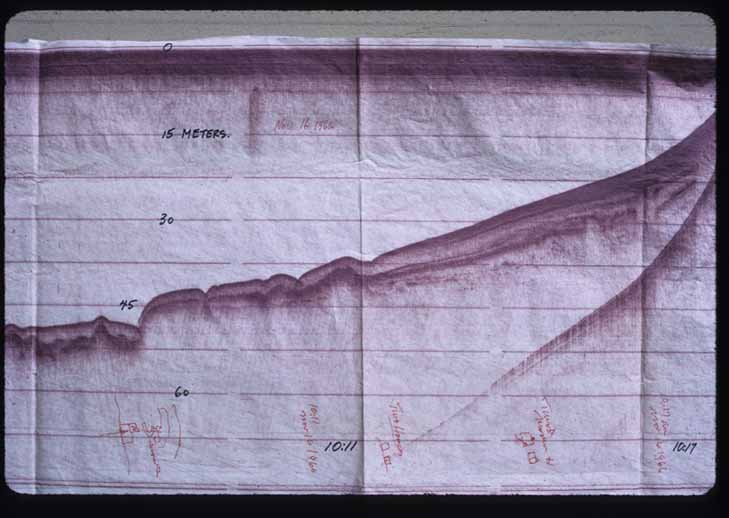
Cousteau and Edgerton soon developed a tight friendship; “My Dear Papa-Flash!” Cousteau would exclaim in handwritten messages about their joint ventures. Aboard the Calypso, the two men and crew went on to locate and explore many underwater ruins and shipwrecks, which they continued around the world into the 1980s. Such underwater archaeology was made possible by several of Doc’s sonar devices, such as the “thumper,” which analyzed the seabed rock and the “boomer,” which provided a seismic profile of the ocean floor.
Edgerton decided to play around with sonar devices, shifting the sonar beam sideways. When towed behind a ship, the “side-scan sonar” device creates a continuous image of the seafloor. Doc’s former student and colleague Martin Klein later developed the first commercial dual-channel side scan sonar, which was used to find the Titanic wreck.
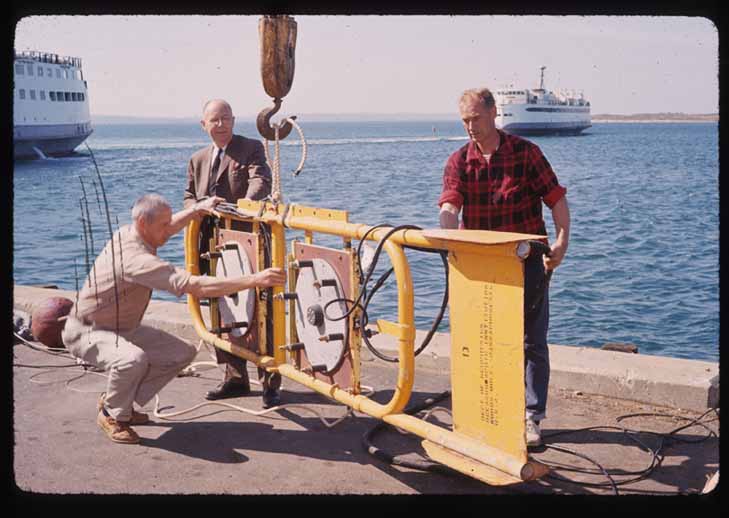
Edgerton won numerous awards for his work, including the National Medal of Science in 1973, even an Oscar for a stroboscopic film. But he is remembered at MIT, most of all, for his generosity, gregariousness, and teaching talent.
One former student, Kim Vandiver, Professor of Mechanical and Ocean Engineering and director of the MIT Edgerton Center, worked as Edgerton’s teaching assistant in the 70s–when the inventor was past retirement age but still running his lab! Vandiver’s first project allowed him to photograph the tiny bubbles that come off the tips of a rapidly whirring propeller, jumpstarting his future in ocean engineering at MIT.
Vandiver remembers the charm of his former mentor: “He was one of those people who could make you feel, when the conversation was going on, that you were the only person in the world, and he did that to thousands of people.”

